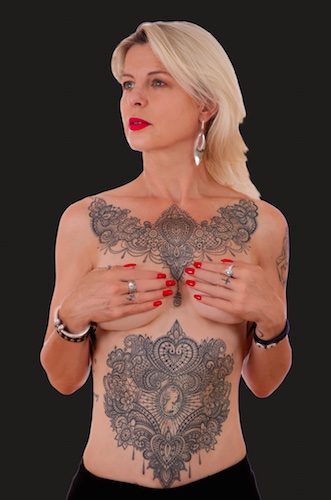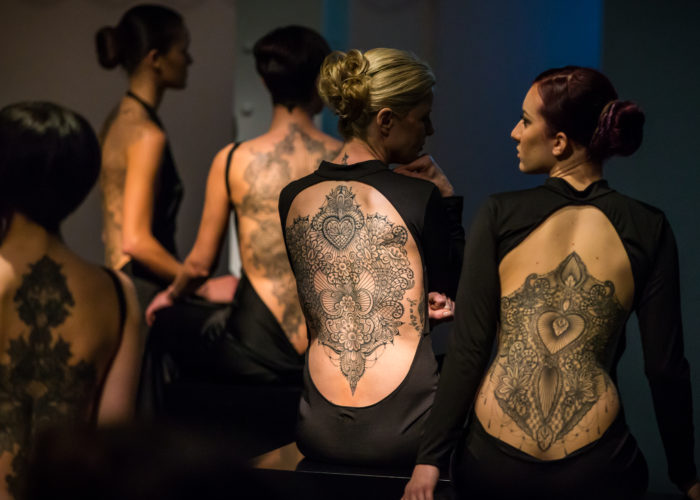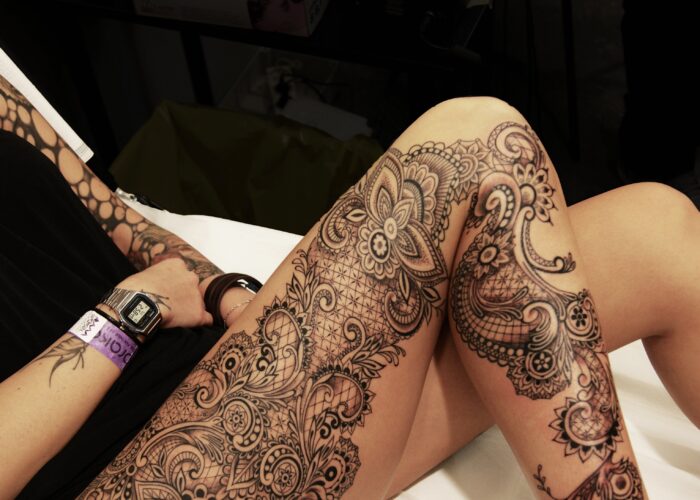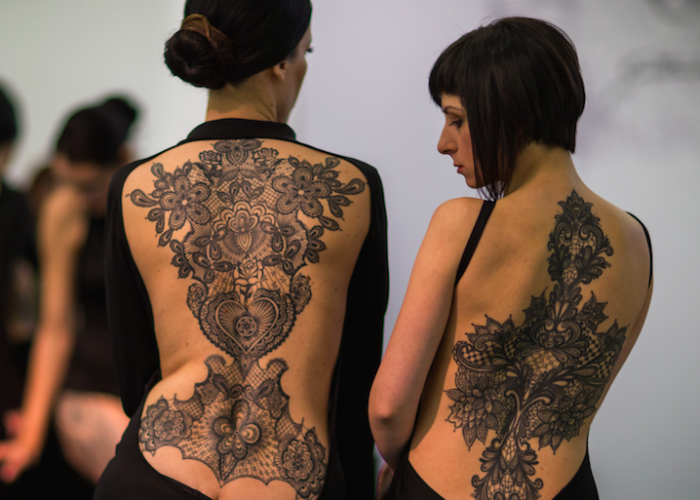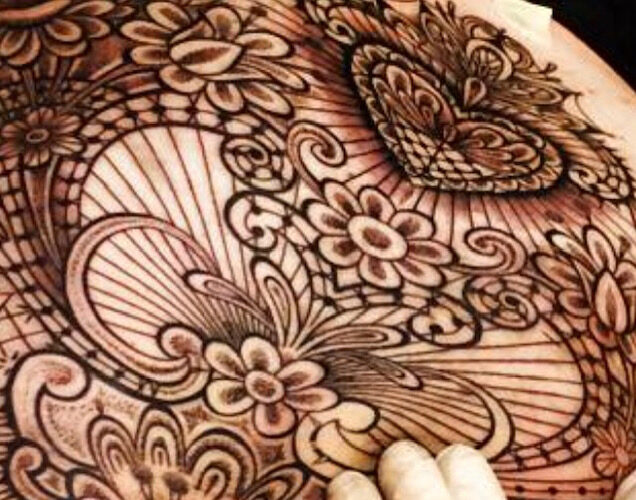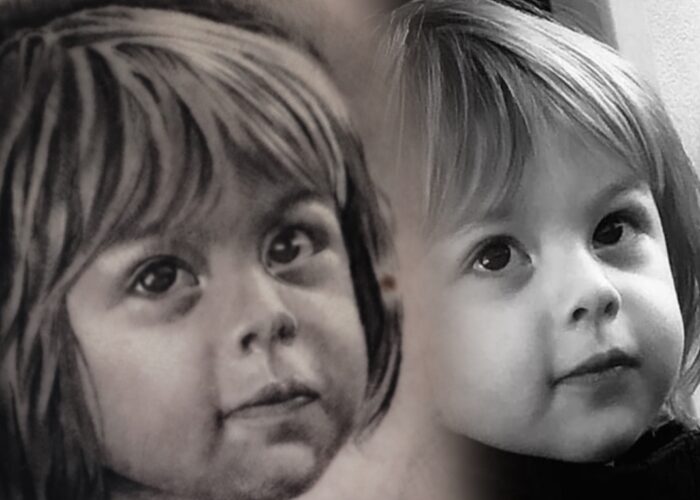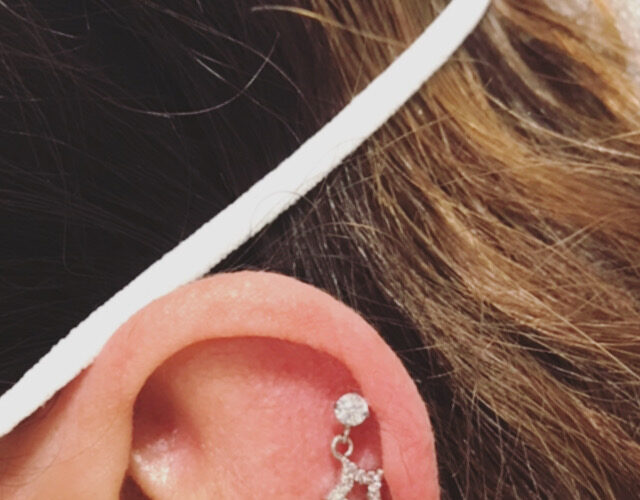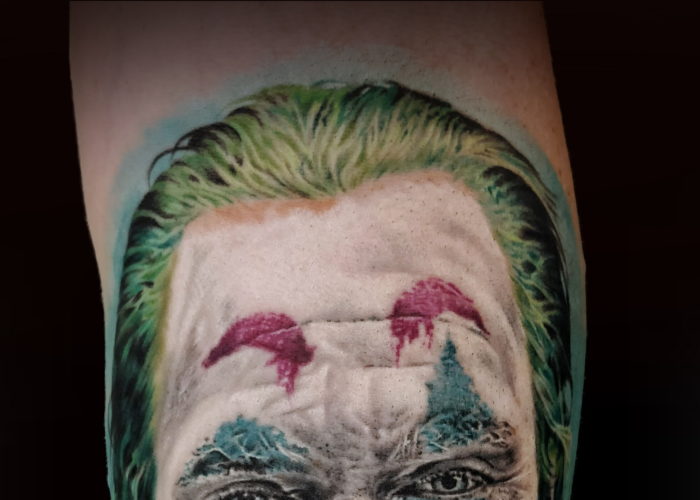Ornamental Tattoo: the all-female fashion in Rome
Ornamental Tattoo: the all-female fashion tattoo in Rome
What is the ornamental tattoo? Why is this trend going crazy among the female public passionate about ink on skin in recent years? We wanted to meet the author and inventor of this refined and important style of the tattoo world directly, which in a short time has conquered not only fans, but also the world of art , involving the institutions connected and related to it.
We are talking about Marco Manzo, tattooist and international artist who, thanks to his work and to the continuous research and experimentation of style and new figurative arts, has given rise to a brand new real Italian and international tattoo trend. The ornamental style refers in particular to the world of lace, embroidery on canvas and transparencies that give the body a seductive and delicate sinuosity at the same time. A triumph of refinement in the world of tattooing and art in general, also acknowledged by the institutions.
Ornamental Tattoo: what are the main characteristics of the ornamental tattoo
This style is really appreciated from the big names in the entertainment industry, as Asia Argento, loyal customer of the Tribal Tattoo Studio and of Marco Manzo, as well as protagonist of some of his most important exhibitions and shows that put the style of ornamental tattoo at the center.
In a short time it has conquered the entire female audience. T
The ornamental tattoo o aims to enhance the shapes of the female body by accompanying its graces and curves and accentuating its strengths.
The design of these unique pieces, studied and elaborated for each single person in an original way, has the body as its starting point, not the drawing. Thanks to the study of individual anatomy, the tattoo therefore does not become the starting point to which the body must adapt, but a consequence of the body itself.
It is from this that the design is born.
In this regard, therefore, let us quote directly the Manifesto written by the artist who designed the idea:
“.. everything has a derivation from the study and therefore from the knowledge and interiorization of fabrics and laces, such as Venetian lace, macramé, dentelle and embroidery, Egyptian wall paintings, rock engravings, Venetian architecture, the baroque ones of Noto, the sacred geometries of the Indian mandalas and the hypnotic ones, and again the sophisticated pendants of the chandeliers, which inspired the jewels of the Victorian Era, the well-wishing Mehndi of Mediterranean Africa and India and the dot work. “
- 0 Comment
